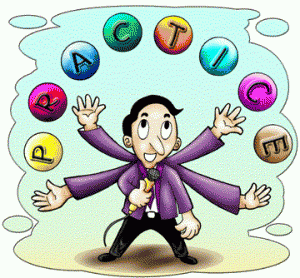 When potential new clients call me, they often ask if cognitive behavior therapy (CBT) works and what the success rate is. I say, “It depends on your motivation level and whether you are willing to practice the skills in between sessions.”
When potential new clients call me, they often ask if cognitive behavior therapy (CBT) works and what the success rate is. I say, “It depends on your motivation level and whether you are willing to practice the skills in between sessions.”
Fitness for the Brain
CBT is fitness for the brain. There are many different skills you can learn, like mindfulness, awareness of emotions and thoughts, identifying thinking traps, realistic thinking, decatastrophizing, reducing vulnerability to negative emotions, and acceptance, to name just a few. You can pick up a self help book and learn what these skills are and how to do them by yourself. However, most people don’t. They want my guidance in how to apply these skills to their own situations.
CBT is Not Magic
Sometimes, however, people think there is a magic bullet. They hope if they visit a therapist’s office that the therapist will have a magical way to change their brain without them having to do anything differently. This isn’t how CBT works.
CBT is Active and Collaborative
CBT is a collaborative and active process whereby the therapist helps you to become aware of your thinking and behavioral patterns and, together, you and your therapist identify strategies and tools that can help. Then it is your job in between sessions to practice the skills everyday. You may only see your therapist for one hour a week but there are 167 additional hours in a week for you to practice your skills. Like with physical exercise, if you only workout once a week, your fitness level may improve but it will be limited. However, if you work out a little bit everyday, your fitness level will soar.
CBT Requires Practice
In CBT, “practice” refers to repeating a cognitive or behavioral skill again and again over time. It begins with the intentional rehearsal of the new skill. At this stage, practice is conscious and takes effort. It is not yet natural. You have to remember to use the skill and you may need to read a notecard or write things down in order to remember what to do. Later, as the skill becomes part of your memory, you may start to use the skill more naturally and unconsciously. The quality of your practice and your knowledge base will largely determine the outcome of each practice session.
The old adage that “practice makes perfect” is rarely true. It is very possible to practice the same skill repeatedly with no increase in achievement or accuracy of application. Think of the people you know who have been driving, cooking, or even teaching for many years with no improvement in their skills. Why is this? How is it possible for one to continually practice a skill with no resulting improvement in performance?
What Makes for Successful Practice?
For practice to improve performance, four conditions must be met:
1. You must be sufficiently motivated to want to improve performance. If you have not attached meaning to learning the new skill, then your motivation will be low.
2. You must have the knowledge necessary to understand the different ways that the new skill can be applied.
3. You must understand how to apply the new skill to deal with a specific situation.
4. You must be able to analyze the results of that application and know what needs to be changed to improve performance in the future.
Guided Practice Helps
Practice may not make perfect, but it does make permanent, thereby aiding in the retention of learning. Consequently, we want to ensure that you practice the new skill correctly from the beginning. Early practice that is done in the presence of a therapist (referred to as guided practice) can offer immediate and corrective feedback to help you analyze and improve your practice. When the practice is correct, the therapist can then assign independent practice (usually homework) in which you can rehearse the skill on your own to enhance learning and retention.
Short-Term and Long-Term Practice
Effective practice starts with massed practice for fast learning and proceeds to distributed practice over a longer term time frame for retention and automatic recall. Practicing a new skill during time periods that are very close together is called massed practice. This produces fast learning, as when one mentally rehearses a multiplication table. Immediate memory is involved here, and the information can fade in seconds if it is not rehearsed quickly. Cramming for an exam is an example of massed practice. Material can be quickly chunked into working memory, but can also be quickly dropped or forgotten if more sustained practice does not follow soon. This happens because the material has no further meaning, and thus the need for long-term retention disappears.
Sustained practice over time, called distributed practice, is the key to retention. If you want to remember a multiplication table later on, you will need to use it repeatedly over time. Thus, practice that is distributed over longer periods of time sustains meaning and consolidates the learnings into long-term storage in a form that will ensure accurate recall and applications in the future.
